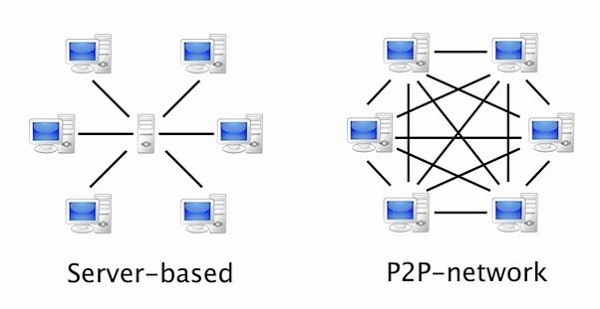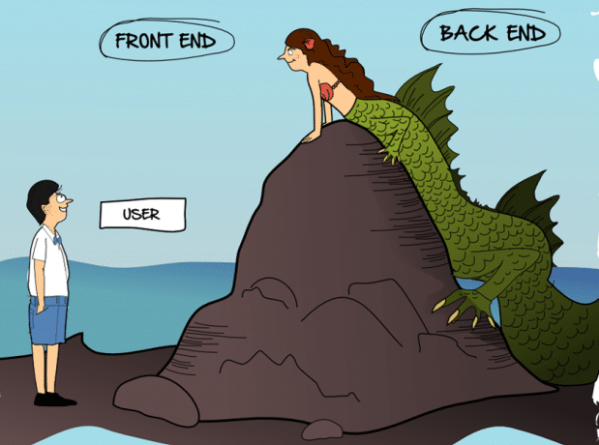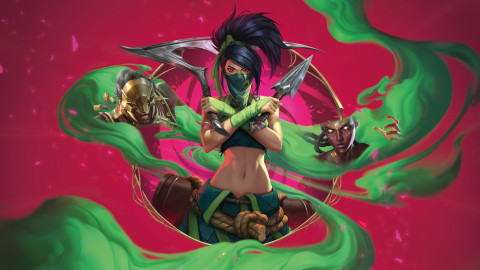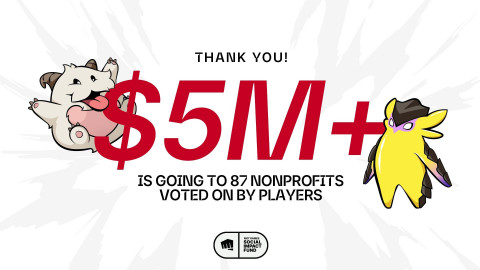Blockchain has been going viral since the end of last year. Cryptocurrency, in particular, which is a by-product of blockchain - virtual currency, virtual scrip, token, etc. - has drawn so much public attention. It has become more heated recently after the panel discussion at one broadcasting company.
The technology is already spread widely and used among many sectors such as financial services, distribution services, and development, in regions like the US and EU. The gaming industry is also joining the bandwagon by implementing this, and many companies are challenging themselves to adopt a new platform with either blockchain or by-products such as token, scrip, and coin.
Inven has prepared two featured articles about “Blockchain and Gaming”. The first chapter delivers an introductory story about blockchain technology, and the second chapter deals with possible and impossible changes when the technology meets gaming.
The current server-client game basically needs to have a front-end such as an image or sound, thus it is neither possible nor necessary to create a blockchain network that does not have any central server. Therefore, this article explains the possible influences this may have on games or gaming industries/environments, assuming that it is locally utilized at a particular point. Cryptocurrency is shortened as scrip in this article. Moreover, the article excludes any determinant that a scrip may have in the real economy. Blockchain refers to the public blockchain unless otherwise indicated.

The concept of blockchain
Conceptually, blockchain is a complete distributed peer-to-peer (P2P) software network, using cryptography to host an application and save data. The foundation is to use the mathematical encryption to make one security computer environment, which consists of numerous similar systems, run without the central authority or a single owner.
However, you don’t need to understand this, because most of us probably didn’t major in computer science or anything related to it. I personally had no idea that this concept even existed until I started meeting experts.
Generally speaking, blockchain refers to the technology that gathers all transaction-related information, creates a public ledger, and chains them together. Forgery is not possible as all ledgers are connected and shared, and it is free from attack by hackers. This is because an arbitrary change of information would need a simultaneous verification by numerous computers, which would require one to hack all of them, and that is not cost-effective.
In other words, it is a mechanism that links computers which are not trusted by one another, in order to maintain the same data in a connected network and prevent any forgery of the data. This new technology has been getting a lot of attention because of how it eliminates the need for trust and security. Furthermore, cryptography itself enables not only signature checks but also enables verification programming, allowing it to store diverse structural contracts.
In fact, how each company implements blockchain technology varies when it comes down to the details. However, the foundation, wherein the technology preserves information, is the same. Although a central administrator supervising a transaction does not exist, it increases the level of trust with algorithms in the network instead, making trust essentially unnecessary in transactions.

Blockchain works the same way as a Mesh Network or Local Area Network (LAN). It connects to a peer computer that runs the same software. In order to access one of these P2P networks through a web browser, you need to use the special software libraries such as Web3.Js and connect the frontend (GUI) and backend (blockchain) of an application with the Javascript API (Chris Dannen, “Introducing Ethereum and Solidity: Foundations of Cryptocurrency and Blockchain Programming for Beginners”).
It is necessary to explain the concept of a block a bit more to better understand chapter 2 - 12 possibilities of development in technology. As mentioned before, blockchain is a mechanism that stores an information of 1MB at maximum in a certain sector and extends chains by creating more blocks whenever the information is changed.
Each block is a structure comprised of a header and body. The header includes a hash of the previous and current header, nonce, Merkle root and others. Upon searching for a block, the data value is found just like how you search in a database.
It also indicates the time unit of the number of particular transactions. A block records transaction data, and the next block begins when the time unit passes. As blockchain includes the history of state transitions, it can also be referred to as an entire record of states in a set at a discrete time which is designated as a block.
This block is created through a process called mining in the blockchain. The process is also called proof-of-work. You need to solve the hash cash problem in order to create a block. The difficulty is given depending on the algorithms that have already been established beforehand, and it is set to be found at a particular and different time for each blockchain.

The process of finding the hash value, creating a block, transmitting it within the network and sharing with all peers, and creating a new block and making it part of a new blockchain, is repeated. The hash value is calculated by the hash function with given input data, transformed into a length of value shorter than the previous one and each data has its own value.
The general purpose of the hash function is to compare data sets and evaluate their similarity. The hash creates a signature to eliminate the need for trust, overlaying the next block on top of the previous one. Whereas the cryptography can be decoded, the hash is safe from being de-hashed in this scope. Because of that, the blockchain protocol uses the hash algorithm.
Blockchain uses an autonomous public key as account information. It may be slightly exaggerated, but it would be easier to understand if you think of it as your username when you log onto games or websites. The public key is a type of address with a distinct serial number and has a private key that is always responsive. The account is an entity of blockchain ledger, and it works as an index.
Smart contracts which are trustworthy for everyone can be used for a scrip afterward. This can be used for creating a financial contract, and related parties can store the value through the scrip.
In summary, data in the blockchain cannot be altered arbitrarily, which lowers the possibility of forgery, and it can also be easily traced. Also, the cost is relatively lower as it does not need both a central server and concentrated system for transaction information and authentication. Participants can monitor transactions in real time which maximizes visibility and increase transparency and prevent self-denial.
Blockchain? Bitcoin? Ethereum? Ripple?
Scrips like Bitcoin are what confuse people most when they are trying to understand blockchain. It may be because it is a subject people have encountered the most.
Simply speaking, blockchain is the fundamental technology to mention when discussing the 4th Industrial Revolution, and a scrip is a materialized version of this technology. Some experts call blockchain a root and scrip a stem, and others call them a flower and a bee, but these are just different perspectives.
The main point is that it is a by-product that eliminates the need for trust when forming a network. A private blockchain like AWS does not need this procedure in theory.
The reason is that a public blockchain network is made of exposed P2P. However, the P2P network has a critical flaw: users cannot trust one another. This is why you download the wrong files from Torrent.

In order to resolve this issue, blockchain has a rewarding system based on game theory. The system leads a user to verify the work so that it checks whether the user has goodwill for the network.
Goodwill in this context does not hold a literal meaning, but it rather indicates a rewarding system based on game theory. In other words, a user participates in the network for nodes but receives a penalty upon denying it. Of course, there are blocks that do not need verification processes, like Ripple.
The process is one where a network user receives incentive by verifying new data through hash values, and this is known as BTC and ETH, the scrips that are most familiar to the public. BTC in a conceptual sense and ETH in a technical sense are rewards given from verification processes, and the network which eliminates the need for trust is made through this process.
As a result, blockchain combines the elements similar to games, providing effective incentives but also punishments at the same time, and acquires trust to maintain the stable network.
Components of blockchain
Although these are not yet defined clearly, experts generally claim that P2P networking, asymmetric cryptography, and cryptographic hashing are the key components of the blockchain.
The P2P networking is probably the most familiar component to the public - torrent is a type of this component - it is a computer communication method without the need for a centralized intermediary. By structure, it does not have a single fixed point.
It can operate a major network even without a server. The network is created by verifying scrips like Bitcoin and Ethereum. It can provide services by distributing relatively small resources.
Asymmetric cryptography is a method that sends an encrypted message to a particular receiver who is the only one allowed to read the contents, although all users can check the sender’s authenticity. The blockchain network uses asymmetric cryptography to create a set of verification to the account so that only the scrip owner can send a scrip. The reason why it is called asymmetric is that each party holds one key for everyone that mathematically matches each other, even though two parties who conduct a transaction with each other are different individuals.
Cryptographic hashing creates a small distinct “print” for each data piece and quickly compares major data sets, checking the possibility of data alteration. The data structure of the Bitcoin and Ethereum Merkle tree is used to record the transaction order.
The perfect technology for the future?
As mentioned before, blockchain is getting a lot of attention for its increased security, ease of tracing, operation and management, and reduced cost of security. However, there is no doubt that the technology is still in an early phase even though it is developing extremely fast.
One of its flaws is the high risk of losing a private key. Disclosure of a key to the public would cause it to lose all meaning, possibly exposing confidential information or assets. If the key creation algorithm itself becomes prone to an attack, it is possible that confidential assets and transaction-related messages may be exposed. Vitalik Buterin, the creator of Ethereum, also mentioned this in the past.
Moreover, although it’s very unlikely, the majority can risk the foundation of a network’s security by manipulating the blockchain process under the agreement. For example, a higher level of calculation using a high-spec computer such as a quantum computer may be able to manipulate transactions.
There’s also a possibility that an asset which is not valuable in the main chain may be traded in the sidechain in an abnormal manner. Of course, there are fork measures such as double-spending prevention, but it is still possible. If there is a weakness in the smart contract, it could possibly be misused by DDoS.
With the performance, its usability may decrease if the amount of information increases drastically and exceeds the limit of the blockchain’s processing speed.It lacks the prevention technology and will be quite difficult to conduct isolation and sanction in relation to gaming.
Cryptoeconomics - the reason why gaming can be related
Economics has been trying to model itself mathematically by observing past trends but has yet to truly succeed. Traditional economics has been developing to explain the system which has lasted for generations. Economics has made notable results by investigation and observation in the recent years. For that, it has been partially designed and partially developed.
The concept and technology of blockchain are treated as an economy and is called cryptoeconomics. Unlike traditional economics, it designs the cryptocurrency with supply, inflation, reward, and penalty built in from the very beginning.
This may be easier to understand with what blockchain implies. Let us assume that there’s only one person in a group of various people, who is capable of building a house. Everyone naturally goes to a big house as that person is the only one who knows how to build one. However, this person may do something bad, for example, by kicking out people for no reason, or inviting only pretty women in the house.
Then, let’s assume that someone came up with an interior plan of a big house in a public area that can be built easily and fast, and controls commodities perfectly. The public area is empty in the beginning. Some say, “Hey, why should I spend time in this public space? It’s empty,” on the other hand, others might say, “There’s this public space that an architect is not managing? That’s cool! I’d love to see.”
In the end, a few people come to the big house in the public area. This house suddenly becomes a place for a small group of people hanging out together. More people come, and reporters write an article about it in a newspaper, and then more people come. It has now become an alternative. This is the proclamatory implication of blockchain.

“Cryptoeconomics is an area to research cryptology and economic incentives in order to construct a system with particular features,” said Vitalik Buterin, the creator of Ethereum.
"Bitcoin is a remarkable cryptographic achievement… The ability to create something which is not duplicable in the digital world has enormous value… Lots of people will build businesses on top of that." said Eric Schmidt, the CEO of Google, in March 2014.
Based on this concept, games, MMORPGs in particular, can make reasonable use of blockchain technology. Games like CryptoKitties have taken an experimental step with the Ethereum network, and games that are in a more familiar form such as Decentraland are preparing to be launched.
It’s not only games. The blockchain network can also be used to create a platform which eliminates the need for trust and can be utilized in the Esports industry. Transfers with smart contracts could be an example.
Also, games which security and fairness - not in relation to probability, but money - are crucial; Things such as web board or casino can adopt it as a network which eliminates the need for trust. In addition to that, it can also be used for VR games as a virtual point that represents real currency usable in the real world, and many games are trying to challenge themselves to adopt it as part of their system.
However, the natural feature of games cannot fully adopt the blockchain network perfectly, because they must have a server to operate. Even so, blockchain still has many benefits that can help stabilize the system.

Blockchain, in theory, does not prevent hacking but rather holds strong financial incentives and penalty policies that block any malicious factors. This is very attractive in terms of a user application.
Current applications for the web, iOS, OSX, Windows, and Android consist of frontend and backend. The backend interacts with the database and is a place for storing data. The frontend is where a user visually sees the application, that is, an interface comprised of various labels and controls.
An application is what drives the modern technology industries. Google and Facebook have set up infrastructures and gathered application data in order to gain influence in various sectors. The infrastructures are based on protocols such as TCP/IP, HTTP<, SMTP, and DNS.
The previous web application needed a number of separate servers with a shared database through the network. That’s why it needed as many servers as possible in order to handle the traffic.
However, the network itself is a database in the blockchain network. An application that is usable for all users is run in the network. Also, the blockchain network supports most protocols, and the number of application classes - in the application architecture, client-server architecture, peer-to-peer architecture, and hybrid - is relatively less.
A traditional web application needs to be designed in a way that saves and shares user data, which cost quite a lot, and it needs a system that penalizes and isolates malicious users in order to maintain trust. That’s why a private firewall and prevention technology like Signcode are used. If the distributed network is substituted with this private infrastructure security, a company can reduce overhead costs. This is where the technology can be utilized for games.
Blockchain enthusiasts expect that the technology will replace all technological paradigms. However, it is unlikely to occur as long as the traditional databases work just fine. The same logic applies to games.
But, there is still a possibility that the blockchain may bring an improvement to structures and environments. In Chapter 2, we will have a look at what possibilities we may face when the blockchain technology is combined with gaming.
Related: Blockchain and Gaming Chapter 2 - 12 possibilities of development in technology
Learn more about Blockchain and its use cases from this Jelvix article.
Sort by:
Comments :1
-
0

level 1 BenCliff
Computer science is very popular today, as it gives the possibility to get an interesting and well-paid job. I'm a computer science department student, and I can say that studying isn't easy. Sometimes I should use https://phdessay.com/free-essays-on/computer-science/ resource to get some help with writing assignments. I prefer to write code, not an essay, so such services are the best decision for me. In the future, I'd like to become a blockchain specialist, and this article is really interesting.







